Recent Water Damage Posts
Preventing Water Damage in Your Home Starts Here
5/3/2024 (Permalink)
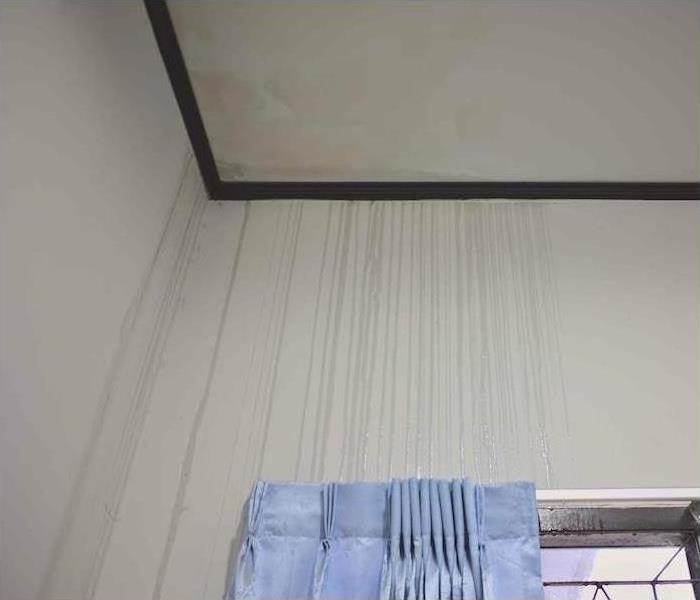 It’s important to educate yourself about home systems that are designed to prevent water from entering your home.
It’s important to educate yourself about home systems that are designed to prevent water from entering your home.
The perks of owning your own home are great but it also brings a lot of responsibility. Homes are built in a way to provide maximum protection from water intrusion but sometimes those methods fail.
It’s important to educate yourself about home systems that are designed to prevent water from entering your home. Here are some of the most common points of failure in a home that could allow water to go where it shouldn’t:
- Faucets and Sinks. Faucets and sinks are places to check for leaks. Over time, the rubber gaskets in faucets can degrade which can lead to leaks. Sink drains are usually sturdy unless you have a clog and use too much plunger pressure to remove it. Too much pressure from plunging can damage seals, so always use caution.
- Disposals. Garbage disposals are one of the hardest working appliances, and they can spring a link. If you believe you have a leak, check out these tips for finding it.
- Gutters and Downspouts. Gutters and downspouts should be clean and free flowing. They should be inspected regularly and cleared of obstructions and debris. Downspouts should move water at least 30 inches away from the home, and the soil should also flow away from the home.
- Roof Damage. Falling limbs from trees are a real risk to roof systems. They can perforate the roof and damage or clog gutters. Shingles are especially susceptible to falling tree damage. Newer shingles are designed and constructed to be impact-resistant, hopefully reducing the need for expensive roof repairs. But shingles degrade over time, and a falling tree or limb can easily damage an aged shingle.
- Sewer Line Obstruction. This is a serious issue and usually takes a professional plumber to resolve it. Sewer lines can clog for a number of reasons, but two of the most common are root intrusion and grease buildup.
- Sump Pump Defect. A sump pump is designed to move water from a basement or crawlspace to outside the home into a drainage system. When a sump pump fails, water backups can affect your home quickly.
Stop the Stink—Tackling Water Damage Quickly
5/1/2024 (Permalink)
 Trust our team at SERVPRO to provide comprehensive services for a full recovery for all your water damage restoration needs.
Trust our team at SERVPRO to provide comprehensive services for a full recovery for all your water damage restoration needs.
You come home from work and immediately step into a puddle. Your dishwasher finally gave out and malfunctioned while you were gone or you left a window open and an unexpected storm blew through.
No matter how it happens, discovering water on your floors is never fun. While you may think that grabbing a bucket and a mop will take care of the situation, oftentimes that is not enough in order to fully recover from a water disaster.
Dealing with water disasters right away by getting us on the phone is crucial if you want to avoid more damage in the form of rot, mold growth and stubborn odors.
The Path of Water
Water is flowing through our homes all the time, but it is usually tucked away in pipes or flowing through fixtures without much cause for thought. Unfortunately, the second water gets where it shouldn’t, it will start to leak and seep into the tiniest of cracks and crevices. This leakage will continue until the water has stopped flowing, which means it can find its way into some pretty hard-to-reach areas.
Stopping the flow of water and cleaning up the visible moisture will probably be your first reaction. However, even if you clean up all of the standing water on your floor, chances are that there is already moisture that has settled behind your walls and under your floors. These parts of your home don’t have proper air movement, which means that the water will linger without evaporating right away.
Over time, this water can start to impact your home’s internal structures, causing swelling to occur in important structural beams, rusted metal and even mold infestations. In fact, it only takes 24–48 hours for mold to grow from a few spores to an entire colony. You could be dealing with a serious mold outbreak on top of frustrating water damage if you don’t take action right away.
Following the Smell
If your water leak was relatively small and you decided to tackle the cleanup on your own, keep an eye out for any musty or earthy smells over the next week or so. If you missed even a little bit of the moisture, mold can start to grow and take over an entire space. Follow your nose to try and track down where it is coming from and then get us on the phone.
Our water damage restoration team will ensure the rest of the water is removed while our odor removal specialists will tackle those stinky odor particles. We will contain the room by shutting off your HVAC system and vents and then we will filter the air. Finally, we will clean and sanitize the entire surface so your space is fresh, clean and ready for normal living once again.
Don’t ignore signs of a water leak. Contact SERVPRO® for a full recovery.
Need Restoration? We Handle It All
2/1/2024 (Permalink)
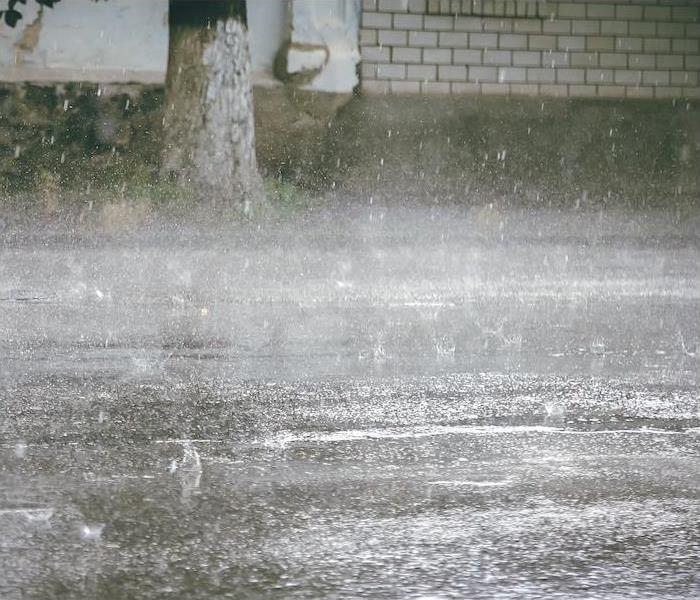 SERVPRO® is Here to Help® when any disaster strikes!
SERVPRO® is Here to Help® when any disaster strikes!
Disasters happen. That’s unfortunately just a fact that we can’t escape. Mother Nature can be incredibly destructive, accidents can happen in the blink of an eye and even something as simple as a slowly dripping washing machine can have a serious impact over time.
While we can’t always control the situations around us, we can control how we react to them. Reacting quickly in the face of a home disaster is crucial to your recovery timeline!
SERVPRO® is proud to be your answer when it comes to disaster recovery. We are here to help you overcome whatever damage situation you are faced with.
Disasters in All Shapes and Sizes
Different disaster scenarios can take various tolls on our community and can leave us scrambling for answers and even support when the disaster is widespread enough.
Minor rainstorms can quickly turn serious when the rain becomes unexpectedly more intense and your basement starts to flood. A small house fire can quickly burn out of control or lead to smoke or soot damage in levels where the fire never even touched.
Over time, simple home damage situations can devolve into more serious damage like mold growth or structural damage, which makes your recovery timeline even more important.
That’s where we come into play! Our team will react quickly and will prioritize your recovery to help you overcome your situation confidently.
A Single Team for All the Work
When it comes to disaster recovery, every minute matters! We are proud to offer 24⁄7 emergency services to all of the homes and businesses in our community. We will help you recover from any sort of water, fire or storm damage disaster that you are faced with.
We are highly trained and ready to work, and we will get started as soon as you call us. Our team is locally owned and operated, which allows us to arrive at your home faster and ready to work whenever you need us to.
Our crew can do everything from laying tarps over your roof to protect your home from further damage to delicately removing smoke odors from your soft or fragile possessions. Our industry-leading equipment and skilled technicians will step up to the plate to take care of you every single time.
This also means that we will truly take care of everything! Our crew is a one-stop-shop for all of your restoration needs, so you don’t need to worry about navigating multiple contracts or agreements with other confusing companies.
We are ready to help you overcome disaster, all you have to do is call. Our team is proud to help you find the light at the end of the tunnel.
Have you experienced a disaster and need restorations? Make one call to our office to start recovery fast.
Tracking Down Water Leaks with Confidence
1/2/2024 (Permalink)
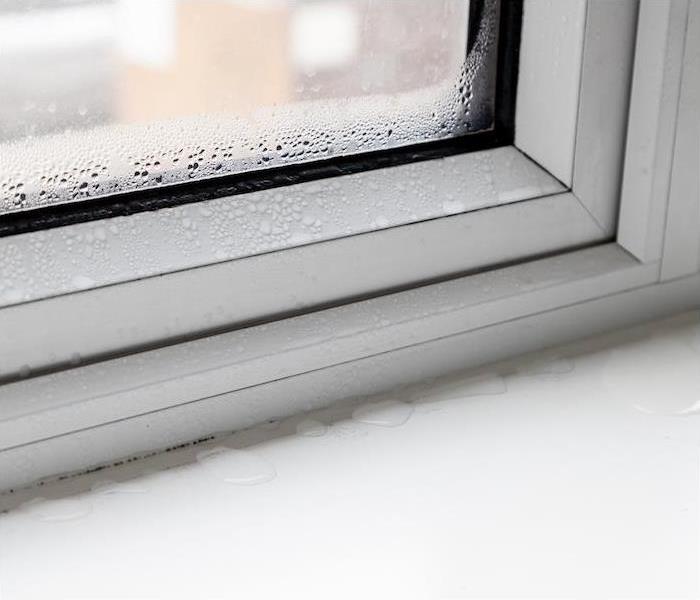 Water damage can happen anywhere in your home. Call SERVPRO to restore water damage on your property 24/7, 365.
Water damage can happen anywhere in your home. Call SERVPRO to restore water damage on your property 24/7, 365.
Water is flowing all around us all of the time! It runs through our gutters when it rains, it flows through our pipes to help us wash clothes and dishes and it even sits silently on our roofs in the dead of winter when it snows.
Since we are surrounded by water, the risk of suffering water damage is always constant. Once a leak starts in your home, it can lead to some pretty significant damage in a short amount of time. While we can’t always prevent water leaks from occurring, knowing where they often start can help you track down the source faster so you can recover quicker.
Checking Your Sinks
How many sinks do you have in your home? Each tap that you turn on throughout your house is connected to a water line that could leak at any point. As your home ages, water lines, connections and seals can start to experience wear and tear. Over time, that unsuspecting damage can spring a leak that can cause chaos underneath your sinks.
That water can quickly seep into your cupboards, under your floors and behind your walls, which can be really hard to dry out on your own. Get into the habit of checking your water lines every time you open up the cupboard to put something away or when you are cleaning each space. Tighten loose connections and replace old seals as necessary.
Beneath Your Appliances
We all rely so heavily on our appliances these days, and they are used often in our homes. Dishwashers, water heaters, washing machines and even your ice maker in your fridge need water to function, which means water leaks are almost inevitable at some point with one of your machines!
These types of leaks are usually unexpected and start behind or beneath your appliance, so try to make a habit of pulling your appliances away from the wall to check for damage whenever you are cleaning. If the leak has been occurring for a while, you could be met with significant water spots or even a stubborn mold infestation.
Beneath Floors and Behind Walls
Water pipes are located all over your home and are constantly bringing water in and out behind your walls. Unfortunately, that also means that water leaks can happen behind your walls at any point! Water leaks in hard-to-reach areas are particularly troublesome because there is no way of knowing what happened until the damage has occurred and you are alerted to the problem.
Once water starts leaking behind your walls, it can seep down your drywall and get into your floors as well. If you start to smell a musty odor or discover that a part of your wall is darker in color than it used to be, it’s time to do some investigating.
Around Windows and Exterior Doors
Condensation can form on our windows when there are drastic temperature swings or when it gets really cold out. If that condensation lingers on your windowsills, it can easily start to swell the wood or warp the surrounding area, making the problem significantly worse.
Moisture can also infiltrate your home through the smallest gaps and cracks around window casings or door jambs. Once inside, it can leak down your walls and compromise your home’s structural integrity.
Not all water damage can be prevented, no matter how diligent you are in addressing issues quickly. If you do suffer damage, call SERVPRO® for a quick and reliable restoration. We will make sure to remove all lingering moisture and address repairs right away so you can get back to your regular life faster.
Don’t ignore signs of water damage! Call SERVPRO® for a quick restoration.
Secure Your Home from Water Damage in the New Year
12/27/2023 (Permalink)
 As you make goals to better yourself, you might as well throw the well-being of your home into the mix!
As you make goals to better yourself, you might as well throw the well-being of your home into the mix!
The new year provides us with a fresh start to make adjustments in the areas of our lives where we want to improve. As you make goals to better yourself, you might as well throw the well-being of your home into the mix! This year, prioritize the protection of your home and take action to prevent water damage.
Water damage can be catastrophic, and it has a lot of power, considering it only takes an inch of water to devastate your home. Safeguard your home from this common threat and avoid disaster in the new year.
What Causes Water Damage?
Learning the main sources of water damage is the first step to take as you waterproof your home. Water leaks can occur inside or outside.
- Gutters clogged with debris and torrential rain are two examples of water damage that begins outside, while household appliances and bathroom equipment frequently lead to leaks inside.
- Damaged pipes or degrading caulk can quickly welcome excess moisture into your home. If leakage isn’t treated right away, mold growth and damaged infrastructure could ensue.
Since water damage is a time-sensitive issue, it’s vital to catch leaks early on. Inspecting for leaks often could save you from an expensive problem in the future!
How to Prevent Damage
Avoiding water damage is easy as long as you make an effort to keep up your home’s maintenance and do a little sleuthing on the side. Early detection is without a doubt the most effective way to protect your property from substantial water damage.
- When searching for hidden water damage, keep an eye out for puddled water and mold growth around your rooms, like your kitchen and bathroom. When it’s raining, feel around your windows to check for excess moisture. You can even use your nose to sniff around for musty odors brought on by water damage.
- Maintaining your roof often (and after any major wind events) for signs of damage and loose or missing shingles. You can also clear your gutters of debris to keep water flowing smoothly.
- Severe weather is a prevalent source of devastating residential water damage. If you don’t prepare, hazards like heavy rain and flash flooding could send water straight into your home.
Winter Water Damage
12/19/2023 (Permalink)
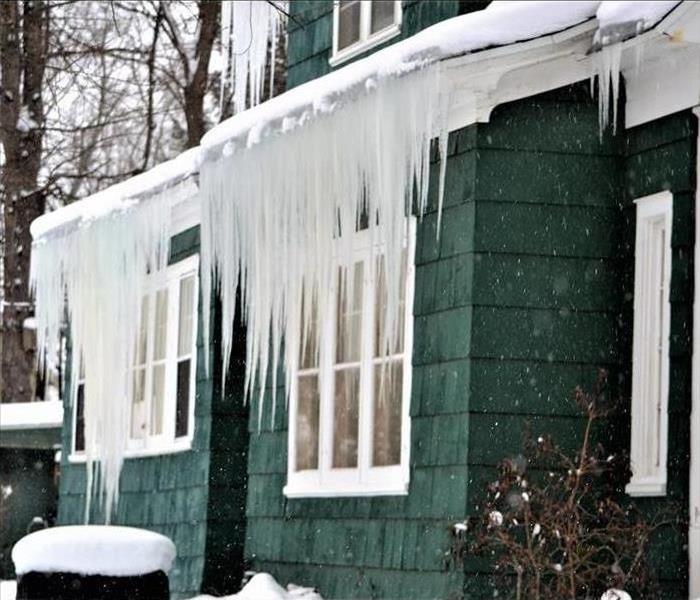 With below freezing temperatures, snow, and ice, your home or business could be in jeopardy of water damage.
With below freezing temperatures, snow, and ice, your home or business could be in jeopardy of water damage.
Michigan winters are known to be brutally cold and large amounts of snow are always expected. With below freezing temperatures, snow, and ice, your home or business could be in jeopardy of water damage. It is crucial that you are aware of the hazards and can prepare, prevent or act quickly if faced with winter water damage.
FROZEN PIPES
A frozen pipe can burst at the point where the ice blockage inside the pipe is located, but typically the rupture is caused by the backflow pressure between the water source and the blockage. A burst pipe can cause considerable damage to your property if not addressed quickly.
ICE DAMS
Ice dams can be a major problem during the winter season. They form when heated air melts roof snow downward into water dammed behind still-frozen ice. When the trapped water cannot safely flow or run into the gutter system, it can backflow under the roof ’s shingles and into the structure’s interior areas.
Cold weather, snow, and ice storms can cause severe damage to your home or business. When these types of disasters strike, immediate action is necessary to prevent additional damage to your property. Our team has winter storm experience, expertise, and the resources to remediate damage caused by winter weather. If disaster strikes your home or business during the winter months, know that SERVPRO® has your back.
Tackling a Flood at Work With Confidence
12/15/2023 (Permalink)
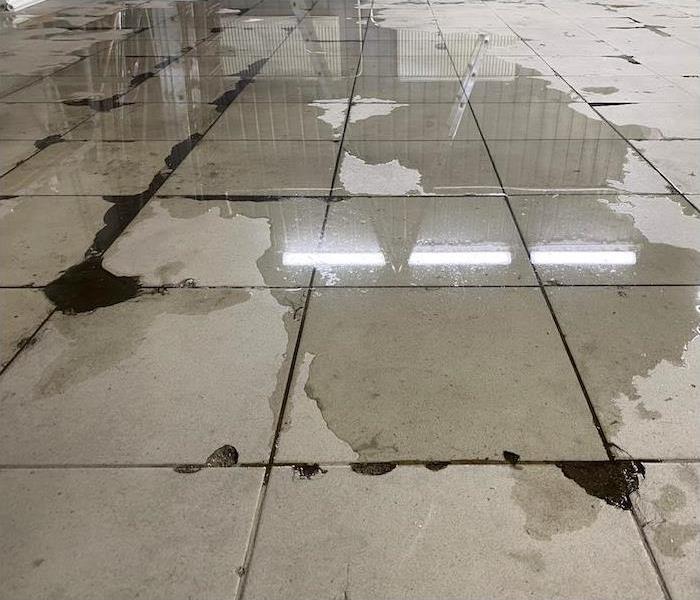 Has water damage infiltrated your business? Give SERVPRO a call to get that resolved!
Has water damage infiltrated your business? Give SERVPRO a call to get that resolved!
The last thing you expect to encounter when you arrive at work is a disaster situation. Normally, you go about your day unlocking doors and turning on lights, so you can be taken by complete surprise by standing water all over your floor or water raining from the ceiling.
Whether the flood is from a plumbing failure or a heavy rainstorm, reacting quickly is crucial in order to avoid a worsening situation. Knowing what to do ahead of time can help you react quicker and with more confidence.
Crucial Steps to Follow
Disasters are often unexpected and can be really unnerving when they happen to you. Try to stay as calm as possible and follow a few simple steps to help you stay in control and get things cleaned up quickly.
1. Stay safe. Your top priority should always be your safety and the safety of the people under your roof. Keep customers and staff out of the area, and try to avoid walking through the water. Assess the situation and then get us on the phone right away.
2. Control the disaster. Acting quickly can help prevent mildew and mold from setting in, so locate the source of the leak as quickly as you are able to. Shut off the appropriate water valve or shut off water to your entire building if you can’t track down the source right away.
3. Start the drying process. Floodwater can be contaminated with storm runoff, chemicals and even sewage, so stay out of the water while you walk around to open windows and turn on fans.
The Recovery Process
Once we arrive, we will start on removing the excess water right away. We will also do a total assessment of your space to make sure all of the hidden moisture behind your walls and under your floors is identified and removed as well.
We often are able to find ways to section off the damaged part of your building so that you can still operate in a reduced capacity. We know that every minute you are closed can be detrimental to your business, so we work quickly but efficiently.
After the water is removed, we will work on saving as many of your business’ possessions as possible while tackling repairs. We are a full-service restoration company, so we will do everything in our power to save as much as possible!
You don’t have to stand for standing water in your business. Call SERVPRO immediately for quick restoration assistance.
Do you need repairs after a water disaster in your commercial building? Contact us to get dried out quickly.
Three Types of Contaminated Water
11/28/2023 (Permalink)
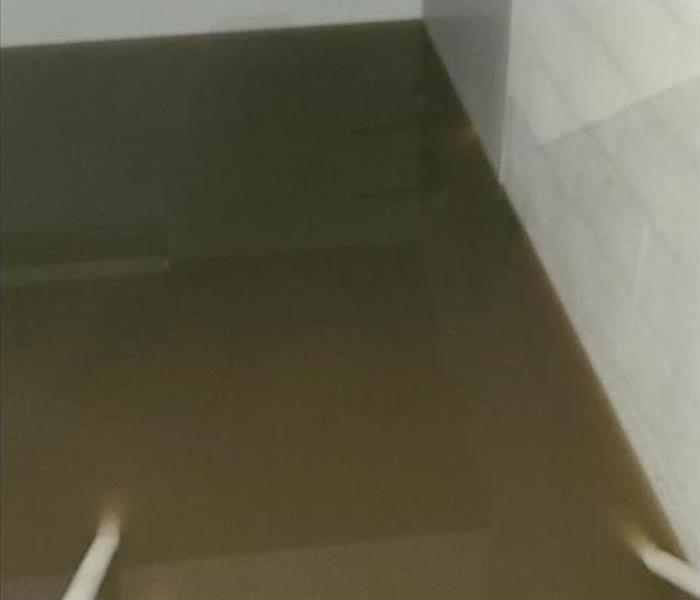 There are three major types of contaminated water.
There are three major types of contaminated water.
When you have water damage in your home or business, it’s important to know what type of water is in your property. There are three major types of contaminated water.
Category 1: "Clean Water"
This is water from a clean source, such as a broken clean water supply line or faucet. If left untreated, category 1 water can quickly degrade into category 2 or 3 water depending upon such factors as time, temperature, and contact with contaminants.
Category 2: "Gray Water"
This water has a significant level of contamination that could cause discomfort or illness if ingested. Sources for category 2 water may include washing machine overflow, toilet overflow with some urine but no feces, or dishwasher overflow.
Category 3: "Black Water"
This water is grossly unsanitary and could cause severe illness or death if ingested, and any contact should be avoided. Sources for category 3 water could include flooding from rivers or streams, water from beyond the toilet trap, water from the toilet bowl with feces, or standing water that has begun to support microbial growth.
SERVPRO® will inspect contaminated water to determine the type of water and then plan the appropriate response to safely restore your home or business.
 It’s important to educate yourself about home systems that are designed to prevent water from entering your home.
It’s important to educate yourself about home systems that are designed to prevent water from entering your home.

 24/7 Emergency Service
24/7 Emergency Service






